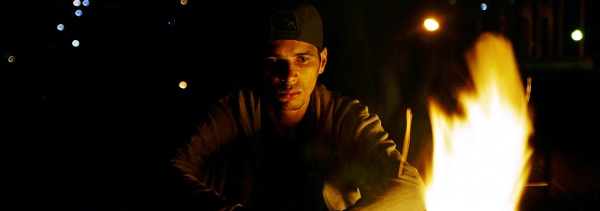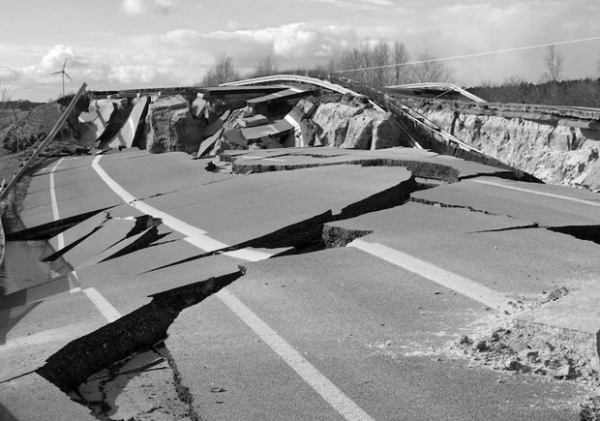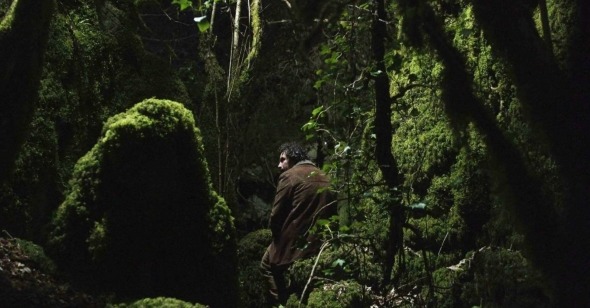Toronto International Film Festival 2019: Wavelengths
by Lawrence Garcia
The Toronto International Film Festival’s Wavelengths section has for several years remained a kind of port in the now-annual storm of TIFF Oscar prognostication. Curated by Andréa Picard, it plays host to works that care not a whit about commercial prospects, and often actively flout them. If this year’s slate didn’t always live up to its boundary-pushing métier, the program nonetheless featured a few vital works that evinced a real taste for beauty, and retained a genuine capacity for surprise.
Even within a distinctly curated program, however, the critical impulse to find resonances and micro-patterns among selections remains active. There was some serendipity, then, to the fact that Oliver Laxe’s Cannes prizewinner Fire Will Come and Eloy Enciso’s Locarno premiere Endless Night—both Galician-language films shot by cinematographer Mauro Herce—screened back-to-back for press on the festival’s first day. A spectral overture of deforestation establishes the ethereal, otherworldly dimension of Laxe’s film—though for the most part it compels as a catalogue of ontological tensions centered on the workings of a remote village, culminating in the climactic conflagration that the title portends. Foregoing the essential realism of Laxe’s film, Endless Night (pictured above) unfolds as a triptych, each section built up around posguerra texts and writings of Franco-era Spain—the first draws from such writers of the Galician diaspora as Max Aub, Luis Seoane, and Ramón de Valenzuela; the second from memoirs of those who lived in the country during that time; and the third from letters written by prisoners of the state. The actors’ recitative delivery inevitably recalls the work of Straub-Huillet—and if this diffuse film eventually fails to engage more than conceptually, this only highlights the precise nature of the duo’s achievement, which is not so easily replicated.
The same could be said of Thai master Apichatpong Weerasethakul, whose influence was inscribed across a number of Wavelengths features. The visual template of Tropical Malady’s tenebrous second half informs the latter portions of Enciso’s film, and could likewise be seen in Brazilian writer-director Maya Da-Rin’s The Fever, set in the port city of Manaus, a locale of industrial activity surrounded by Amazon rainforest. Through its central relationship—between an Indigenous middle-aged widower and his daughter, a medical student-to-be—Da-Rin’s film explores a push-pull between urban life and rural wilderness, amidst a tangle of colonial tensions. But a recurring news story about a strange, savage beast prowling the local area notwithstanding, its aesthetic gestures come to feel both perfunctory and predetermined, with only a faint feel for the allure of the untamed.
Da-Rin’s film explicitly engages with an oral tradition of storytelling, which likewise animates Gabino Rodríguez’s My Skin, Luminous, a commission of Mexico’s Ministry of Education, codirected with Mexican-Canadian filmmaker Nicolás Pereda. Described in narration as a “story that felt like a dream,” it’s a genuine shapeshifter, starting out with rote documentation of an educational initiative in a Michoacán primary school, before moving into discombobulating scenes of ethereal light, striking blackness, and eerie repose. Inspired by the writings of Mexican novelist Mario Bellatin, the film coheres somewhat unsurely, but offers at least one truly memorable sequence—a kind of performance art piece in miniature—a static shot of noxious yellow fog rolling into a classroom, surrounding a young boy moving through various positions between two chairs.
Presented alongside Rodríguez’s film was Seven Years in May, the latest from Brazilian director Affonso Uchôa, which works as a natural extension of his previous film Araby (2017), codirected by João Dumans. The centerpiece scene is a young man’s fireside recollection of police brutality, spiraling drug abuse, and eventual exile—the injustices inscribed on his very body—captured in a single take that takes up roughly half of this 42-minute film. This inclusion is, to be sure, a bold structural choice—and Rafael dos Santos Rocha’s story is no doubt true to the experiences of many. But there’s a whiff of the programmatic in this increasingly familiar storytelling gesture—Endless Night features a lengthy one-take confessional as well—which, along with the director’s seeming wariness of aesthetic pleasure, dulls the scene’s potential power. The film’s final sequence, observing a game in which individuals stand at the command “alive,” squat at the command “dead,” and are eliminated for any deviation, achieves the inverse effect, playing for the most part as arthouse affectation, but nonetheless ending on a moving note of resilience.

Whereas Uchôa’s film compels in its structure, even as its individual parts fail to convince, Krabi, 2562 might have the opposite problem. A collaboration between London-based artist Ben Rivers and Thai director Anocha Suwichakornpong, the film operates at the nexus of both filmmakers’ interests, using a loose, protean narrative, centered around the eponymous Thai locale, to probe at the pitfalls of both ethnographic observation and touristic gawking. Introducing the film at its second public screening, Rivers described it as a “puzzle,” and it does sustain its 94-minute runtime in the manner of Anocha’s By the Time It Gets Dark (2016), presenting the viewer with sundry moving parts buttressed by fulsome textural detail and all manner of disorienting edits. If the pieces don’t quite fit together by the end, linked somewhat arbitrarily by the film’s temporal flattening—the entirety of the Holocene is folded into the present, 2562 being the current year of the Thai Buddhist calendar—that irresolvability is at least part of the point, necessitating engagement with each individual fragment as opposed to a possibly reductive superstructure.
The film’s wariness of commodified tourist-trap attractions is appropriate enough when it comes to TIFF as a whole, where audiences can easily drift from screening to screening, casually sampling the wares of various filmmakers from across the globe—and leaving whenever it suits them—a mode of engagement that Wavelengths isn’t insulated from, and perhaps even encourages given its focus on the abstruse and the esoteric. But the attention paid to the specifics of presentation, particularly in the section’s four experimental shorts programs, each of which screened only once, makes viewers less prone to drive-by engagement. Indeed, it’s hard to imagine how Philipp Fleischmann’s Austrian Pavilion would play otherwise, since notions of access—to funding bodies, production materials, and presentation opportunities—are central to its resonance. Using the same methods he employed on Main Hall (2013) and mumok kino (2018), Fleischmann captures the eponymous structure—a national pavilion housed in the Venice Biennale—by means of a constructed, site-specific 35mm dispositif in the shape of a parabolic arch, which creates a space-time relationship distinct from that of literally any other camera in existence. Fleischmann’s silent, four-minute short may not be an Event movie in the usual sense, but it’s a useful reminder that a screening—any screening—is unique in its own way, and thus an event all the same.
Film viewings are, after all, only a part of the festival experience, which in addition affords filmmakers the opportunity to discuss their work with the public, mainly in the form of post-screening Q&As. In the case of James N. Kienitz Wilkins’s This Action Lies, this might seem somewhat redundant, as the film operates as its own voluble annunciation, unfolding as a polyphonic dialogue voiced by Kienitz Wilkins himself, with a distinct narrative perspective paired with an image of a Styrofoam cup of coffee mounted on a Doric pedestal, lighted from one of three evenly spaced angles. Like his sinuous, scintillating Indefinite Pitch (2016), it’s a humorous, riveting piece of work, sustaining its 32 minutes with an associative stream of ideas and subjects ranging from genericide to Dunkin’ Donuts’ branding to questions of “insulation” in the art world.
Other short-film highlights included Erica Sheu’s memorably modest Transcript, an elegant 35mm study of baby’s breath imprinted on photosensitive cyanotype paper, and Annie MacDonell’s Book of Hours, which reclaims the diurnal cycles of traditionally feminine labor by enfolding images of artistic production into domestic spaces. In the same program as the latter was Chicago-based filmmaker Deborah Stratman’s Vever (for Barbara), a film for which the auteur possessive is likely inappropriate. Bringing together contributions from three female American experimental filmmakers—texts and teachings by Maya Deren, unused footage Barbara Hammer shot in Guatemala in 1975, Stratman’s own curatorial eye—it is a harmonious product of coincidence, as well as a cross-generational expression of persistent colonial and anthropological filmmaking anxieties. Older even than Hammer’s footage was Edward Owens’s 1967 Remembrance: A Portrait Study, which presents sensuous superimpositions of the director’s mother and her friends, regally posed in feather boas, silk belts, and wool skirts, and often shrouded in darkness. A dense, ravishing work, as well as an essential piece of queer black film history, it was one of only four films directed by Owens, a former student of Gregory Markopoulos—and this restoration was an aching glimpse at the career that might have been.
A portrait study of an entirely different sort, Sergei Loznitsa’s State Funeral reconstructs the extended mourning period following Stalin’s death in 1953. The director’s use of found footage—here sourced from the Russian State Documentary Film & Photo Archive—is in keeping with last year’s The Trial, but the impression the film creates is closer to that of his earlier short The Train Stop (2000), with its hypnotic rhythms and near-abstract portraiture. If State Funeral’s relentless focus on faces and reactions at times recalled Abbas Kiarostami’s Shirin (2008), Jessica Sarah Rinland’s Those That, at a Distance, Resemble Another invokes the Iranian master directly, with an epigraph inspired by William Shimell’s opening lecture in Certified Copy (2010). From the director’s process-oriented depiction of making an elephant tusk replica flows an examination of (ecological) conservation and artistic authenticity—though at bottom, her film is a veritable catalogue of sensation (not unlike that of an ASMR video), offering textured, tactile images of various restorative activities amidst a rich Foley soundscape.
Loznitsa and Rinland’s films are both predicated on archival material, which elsewhere in the festival could be seen in such disparate highlights as Terrence Malick’s A Hidden Life and Pietro Marcello’s Martin Eden. An archive of a different sort could be found in Toronto-based, 3-D filmmaker Blake Williams’s 2008, a 12-minute video piece whose title evokes a photo album, and which is, in a very literal sense, a home movie. (Full disclosure: Williams is a friend of mine.) The film’s signature shot is of a now-defunct CRT television featuring intermittent, vertically cascading waves of color. Recalling the coup-de-cinéma moment of Godard’s Goodbye to Language (2014)—though it’s actually something quite distinct—2008’s most impressive sequence offers the illusion of a stereoscopic image coming apart, even as it’s actually coming together. But the film’s emotional linchpin is perhaps the comparatively brief shot of Williams’s partner gazing out across a sandy expanse with a pair of binoculars. Given its position within 2008’s intensifying waves of affective sensation—thickening bands of color, the recurring sight of cherry blossoms quivering in the wind—the inclusion feels downright romantic, and serves as a welcome, too-rare reminder, especially for those of us cinephiles who identify as Truffaut’s “sick people,” that looking is also an act of love.
Much more will no doubt be written about Albert Serra’s Liberté and Pedro Costa’s Vitalina Varela—two of the program’s most acclaimed works, and both NYFF Main Slate selections—so it will perhaps suffice to end on Thomas Heise’s Heimat Is a Space in Time, which at 218 minutes is by far the section’s longest film. Like Wang Bing’s Dead Souls from last year, this sprawling essay film has the daunting heft of a final testament. But though it progresses through an entire century of German history, Heise actively refuses the definitive, operating along the principle—voiced in a recorded conversation between his philosophy professor father, Wolfgang, and German dramatist Heiner Müller—that “intensified objectivity can be grasped through an intensification of subjectivity.” With a method that could be triangulated in relation to Stratman’s layered landscape study in The Illinois Parables (2016) and Ruth Beckermann’s epistolary exhumation in The Dreamed Ones (2016), Heise presents predominantly black-and-white, high-contrast compositions of various decontextualized locations, alongside unaffected narration of letters, documents, and writings that trace his family’s genealogy. A work of limpid form and mesmeric rhythm, it distinguishes itself by giving prominence to the obscure, the displaced, and the otherwise forgotten—and thus finds its natural place in a program dedicated to the very same.

